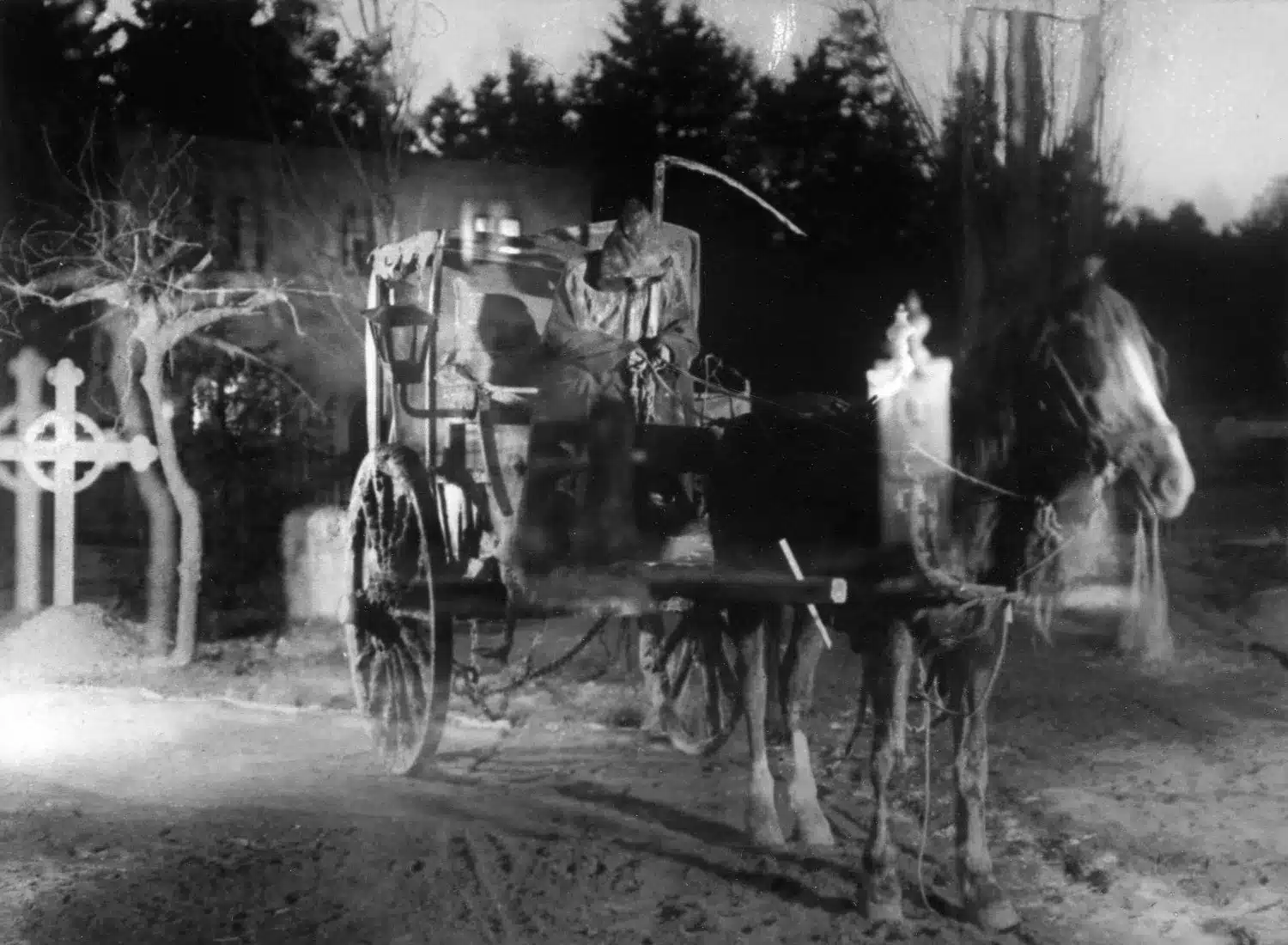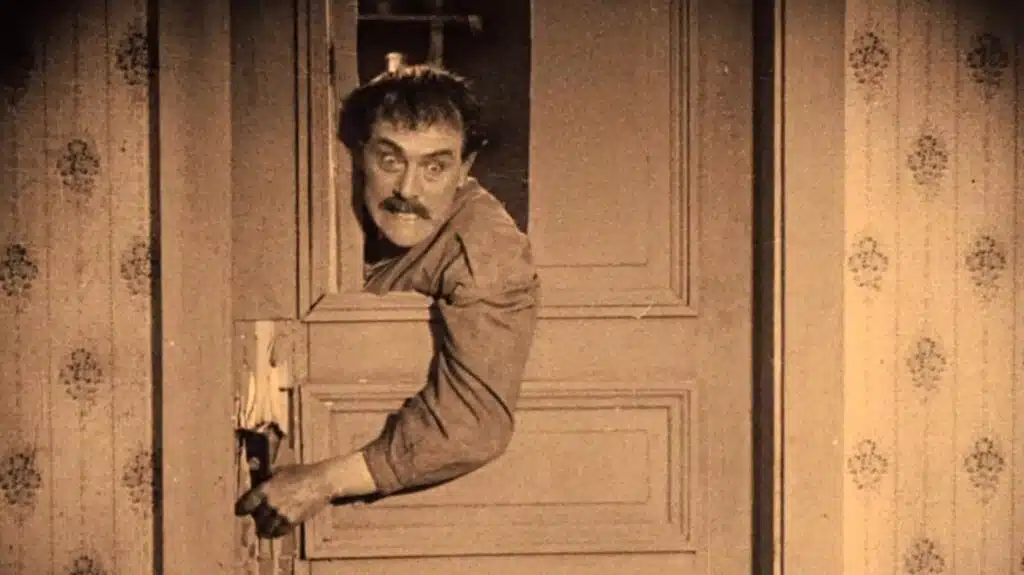The Phantom Carriage is something of a phantom movie. Loved by Ingmar Bergman, who rewatched it every year and claimed it inspired him to get into film-making, it was also adored by Charlie Chaplin, who called it the best film ever made. Stanley Kubrick was also a fan, and lifted one of his most iconic sequences – Jack Nicholson axing through a door in The Shining – directly from it. But how many people have actually seen this classic?
Bergman, Chaplin, Kubrick, this is clearly a film with “bottom” but it also has plenty going on up top. In short, it’s a Dickensian tale of a man who has lived a life as an utter wastrel having a redemptive moment at the hour of his death. David Holm (Victor Sjöström, who also directs) has pissed away his life as a soak. Now, having ruined his marriage, infected any number of people with tuberculosis and become an abject scumbag, on the last stroke of New Year’s Eve David gets involved in a brawl in a churchyard and unexpectedly dies.
Death’s phantom carriage is soon on the scene to collect David’s soul and its driver tells him that, as the last person to die that year, David will be taking over as the new driver of the phantom carriage. Surprise surprise, the carriage’s current driver is Georges (Tore Svennberg), the man who led David into the dissolute life in the first place.
Sjöström tells the story in a far from linear way, flashing back, and then back again within the flashbacks, to lay out David’s progress from decent and sober family man to contemptible sot. But he starts and ends at the death bed of Edit, a fine Salvation Army woman – another of David’s infectees – before cycling back and forwards, taking in the story of Georges en route to David’s big moment, when he must decide if he’s going to attend to Edit (Astrid Holm) on her death bed and, for the first time in many years, do the decent thing and say a kind word to a woman who selflessly struggled to save his soul.
The story is probably a little more convoluted than is necessary and the film is a touch long, but two things still stand out over a century later. The first is Sjöström’s playing of David, which is much more naturalistic than you’d find in most films of the era. In a version of Method acting, Sjöström inserted himself into the slums and drank with the bums for a stretch before shooting began, and the devil-may-care, bonhomie-at-any-cost attitude of David is all the better for it. Notably, Ingmar Bergman would persuade Sjöström to come out of retirement to play an elderly doctor on a journey down memory lane in 1957’s Wild Strawberries, one of his most acclaimed films. The characters of the young drunk and the old doctor are not at all similar, except in one key respect – they are unlikeable people who we nevertheless have some sympathy for. David is not so much an evil man as one who has just gone badly astray.
The other thing is the special effects, which are crude, obviously, by today’s standards, but have been sweated over in post-production to deliver the right artistic effect. Using little more than double exposure, Sjöström and his cinematographer Julius Jaenzon create a spectral carriage that appears out of nowhere and a wraith-like driver who can walk through solid objects. Both are highly effective, and Sjöström even throws in a montage sequence showing the carriage doing its thing in various locations, including at sea.
Jaenzon’s non-special-effects cinematography is also very special, and he lays on picturesque moments – flashbacks to David’s happy life with his family – to demonstrate lighting that’s intended to convey an effect rather than simply illuminate the scene. The lyrical lighting is incredibly advanced for 1921 and not for nothing does Sjöström make sure that Jaenzon’s name is prominently featured in the opening credits.
This film has been restored, digitally scanned and cleaned up a touch. The image is clear and stable and it has good contrast. What it really needs is a frame by frame restoration, to remove the scratches, hairs, and artefacts that pop up all over the place. Even without the full treatment, it’s well worth watching. A classic that lives up to its billing.
The Phantom Carriage – Watch it/buy it at Amazon
I am an Amazon affiliate
© Steve Morrissey 2023


